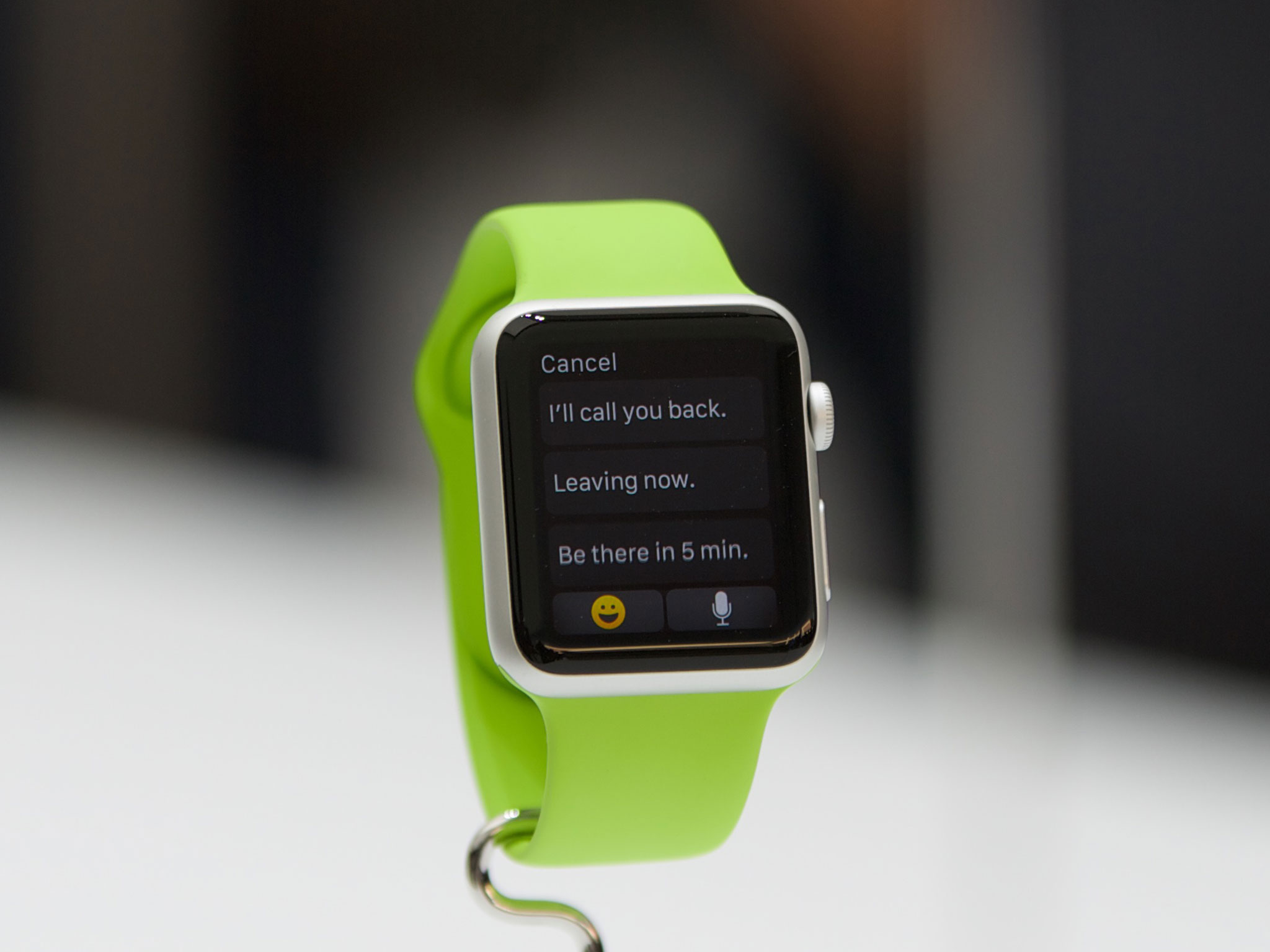The Apple Watch screens have a resolution of 390x312 and 340x272

Apple made a point when introducing the Apple Watch to show that unlike the various other smartwatches out there, theirs was coming in two different sizes, and now we know that also means two different resolutions. The reasoning is almost entirely gender fashion based: bigger watches look goofy on smaller female wrists, so they get smaller watches. That means the Apple Watch has two different-sized displays — the larger 42mm-tall watch has a 390x312 screen (38mm diagonally), while the smaller 38mm-tall Apple Watch has a 340x272 screen (33.3mm diagonally). This does compare well to competing Android Wear smartwatches, which tend to feature screens that aren't quite as pixel-dense.
This means that developers building Apple Watch apps will have to design for both screen sizes. Most of the work will be the same, generally, as women tend to also have smaller fingers than men and can work the smaller targets (it's not a huge size difference, after all), but any graphical assets will have to be produced in both sizes. For example, a notification icon on the 42mm Apple Watch would be 32px tall, while on the smaller model it will be 29px. With such a small difference in size there's no way to elegantly scale down the icon without losing quality.
Sure, there are ways Apple could have gotten around this, but there's a reason they went the route they've gone. Mandating much higher resolution images so they could be easily scaled down to size while maintaining quality would lead to bloated apps. Scaling the 42mm Apple Watch's display down to to the 38mm size with the same resolution would add cost to the manufacturing process as well as through a wrench into building apps that depend on UI items of a specific size regardless of the size of the watch. So this is the solution we've got, two different resolutions with separate design requirements. It's all part of the WatchKit SDK that was released today.
Source: Apple Watch Human Interface Guidelines
iMore offers spot-on advice and guidance from our team of experts, with decades of Apple device experience to lean on. Learn more with iMore!
Derek Kessler is Special Projects Manager for Mobile Nations. He's been writing about tech since 2009, has far more phones than is considered humane, still carries a torch for Palm, and got a Tesla because it was the biggest gadget he could find. You can follow him on Twitter at @derekakessler.

